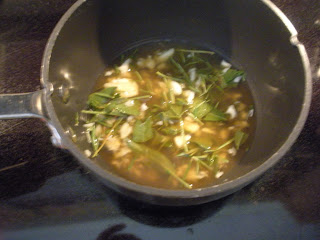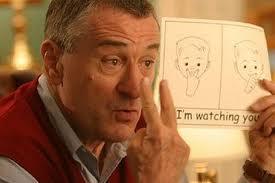If you are a coffee-holic like myself, then you have probably wondered what exactly flavors your creme-brulee, chocolate-raspberry and "Jaimaican Me Crazy" brews. The coffee packages generally don't specify the ingredients used to flavor the coffee (they just say "coffee and natural and artificial flavors"), which is rather frightening, in my opinion. So, I decided to do a little research. I know it's long, but it's worth the read. According to
this website,
"
Flavoring oils are combinations of natural and synthetic flavor chemicals which are compounded by professional flavor chemists. Natural oils used in flavored coffees are extracted from a variety of sources, such as vanilla beans, cocoa beans, and various nuts and berries. Cinnamon, clove, and chicory are also used in a variety of coffee flavors. Synthetic flavor agents are chemicals which are manufactured on a commercial basis. For example, a nutty, woody, musty flavor can be produced with 2, 4-Dimethyl-5-acetylthiazole. Similarly, 2,5-Dimethylpyrazine is used to add an earthy, almost peanuty or potato-like flavor. Flavor chemists blend many such oils to achieve specific flavor combinations.
While other food flavors may be composed of nine or 10 ingredients, coffee flavors may require up to 80 different compounds to achieve subtle flavors. Virtually any taste can be reproduced. Marketers have found that consumers prefer coffee flavors with sweet creamy notes. The ideal flavor should mask some of the harsh notes of the coffee yet not interfere with its aromatic characteristics.
The pure flavor compounds described above are highly concentrated and must be diluted in a solvent to allow the blending of multiple oils and easy application to the beans. Common solvents include water, alcohol, propylene glycol, and fractionated vegetable oils. These solvents are generally volatile chemicals that are removed from the beans by drying. Older solvent system technology produced beans which dried up and lost flavor. Current technology uses more stable solvents which leave the beans with a glossy sheen and longer lasting flavor.
The flavor chemicals and the solvents used in flavors must not only be approved for use in foods, but they must also not adversely react with the packaging material and the processing equipment with which they come into contact. Furthermore, they must meet the desired cost constraints."
A couple of things bother me about this description of coffee flavoring oils. For starters, some coffees contain 80 different flavoring compounds! Yuck! In addition, according to
ChemSpider, a chemical database, 2, 4-Dimethyl-5-acetylthiazole is a synthetic flavorant that causes skin, eye and lung irritation upon contact (so what exactly does it do to us when it's ingested?). Secondly, according to ChemSpider, 2,5-Dimethylpyrazine in its chemical state carries an irreversible damage risk to the eyes, skin and lungs, is a skin and eye irritant, and is harmful if swallowed (!). Now, I am not a chemist and I certainly hope that in their flavorant states these chemicals are in fact edible, but the facts do freak me out a bit. (As do the solvents used in the coffee flavoring process.) That being said, I started experimenting with ways to flavor my own coffee. Below you will find a very easy (and very yummy) way to flavor your own coffee, minus the mystery ingredients! I hope you enjoy your chemical-free, flavored java fix :)
Easy DIY Flavored Coffee Recipe
*For a 10-cup pot of coffee, place 1/2 to 1 tsp (or more, according to your preferences) of the desired spice on top of the grounds PRIOR TO brewing.
*Brew and enjoy!
*Spices that I use frequently are pumpkin pie spice and cinnamon. I have also used cocoa powder, or a dash of peppermint extract or vanilla extract on top of the grounds prior to brewing very successfully.






































